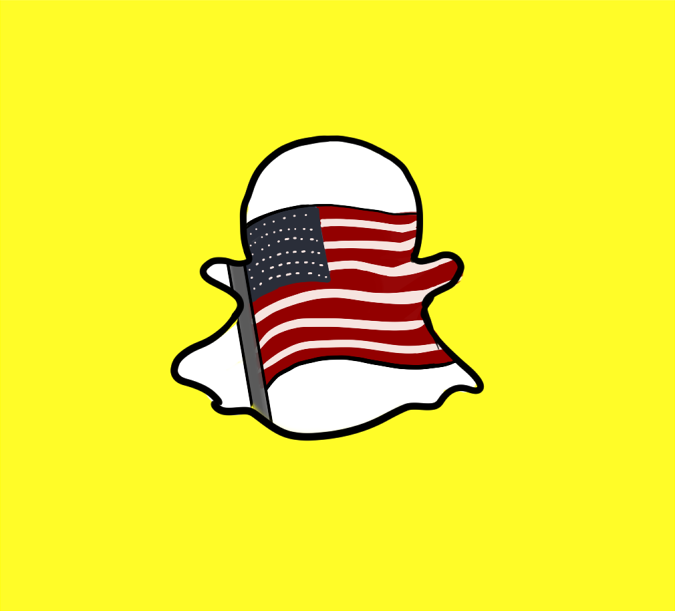Snapchat’s Political Invasion
February 22, 2016
With the political heat heavy, candidates are willing to take any measures to attain a cushy seat in the Oval Office. Audiences have seen candidates take varyingly outrageous steps to win votes for the upcoming election. In order to attract younger voters, some political leaders have started campaigning on a digital platform with the renowned app Snapchat.
Snapchat, a social media app, allows people to communicate via pictures and videos. The app, originally created by Evan Spiegel, also contains a feature that shares multiple people’s videos or photos to the public if they all are in the same location, such as Disney World, a mall, or an election debate. Snapchat also includes filters, which allow a person to take a picture and have a decoration around it. With all the current political drama and extensive use of media promotion, some filters have been made, specially centered around politics.
For live stories, Snapchat shared the first GOP debate and consequently, more millennials watched the debate. This provoked the younger generation to further participate in the election and share their reactions. In terms of filters, Snapchat made a bold move by including a filter stating, “How I Feel about the Bad Iran Deal” with which users could take a picture of their reaction or any other response.
Political figures have flocked to the app, using accounts that can be followed by the public; such individuals include Rick Perry, Marco Rubio, Rand Paul, Martin O’Malley, Chris Christie, Carly Fiorina, Lindsay Graham and Scott Walker. Unfortunately for the candidates, many young people, at least at Ridge, weren’t even aware of these accounts nor do they follow them. Adam Miesner ‘16 believes that “only their current followers [pre-campaign supporters] would follow them” and in reference to following them, says that he “personally doesn’t.”
Dan O’Sullivan ‘17, more invested in the election than Miesner, also doesn’t watch the Snapchat updates, but for separate reasons. O’Sulllivan agrees with the appeal of a media platform to candidates, elaborating that “most candidates are active on many social media platforms because they know that young people, who use social media the most, are easy to influence.” Despite this, O’Sullivan watches all the debates on TV so he “can get a sense of their views and skills as orators, which [he thinks] is most important.”
While Snapchat does allow candidates to share videos, potential voters may not get a proper sense of the presence a candidate has in front of thousands of eyes. Older generations criticize millennials for being flighty and unable to focus on anything for too long, living in a rapid, digitally superior world. Are our priorities shifting in terms of what we look for in a leader? Should they be shifting?
With social media growing exponentially, infiltrating even the political landscape, the question arises: what exactly is helping candidates in the 2016 election more—leadership skills and their ability to speak confidently in front of mass audiences, or just a few likes and retweets?


Lia Garrett • Feb 29, 2016 at 2:09 pm
I really liked this article! I like how it makes news available to the younger generation of people that may not be as involved in politics. It also makes the election more popular for the candidates, which helps getting more demographics involved in America today.
aakash vasireddy • Feb 29, 2016 at 2:05 pm
i believe that snapchat involving itself in politics is a good thing because it allows for younger people to be more involved in what is happening in politics. It also allows politicians to make their ideas to be heard so it allows people to do better in elections.
Lauren Patetta • Feb 29, 2016 at 11:15 am
This article was really interesting!! I noticed Snapchat embarking into the political field a few months, and thought it was a clever way for candidates to gain support. Of course, like every media platform, it may end up being very biased, but it’s still an intriguing tool that can get many more kids active in their government.